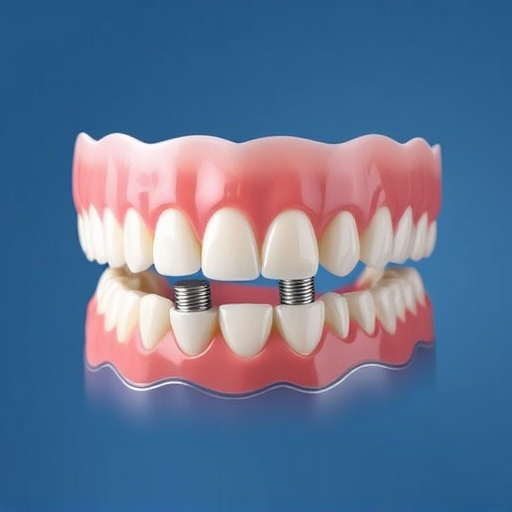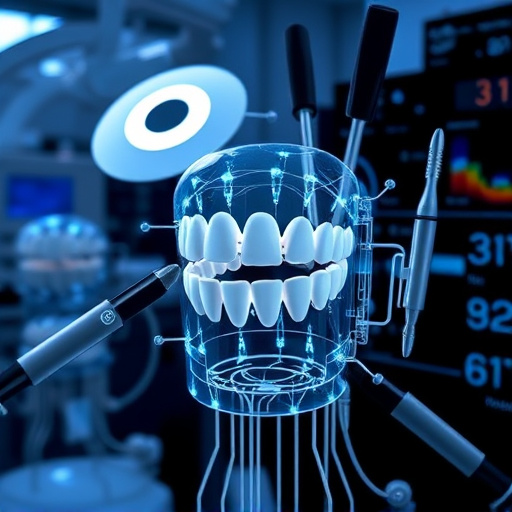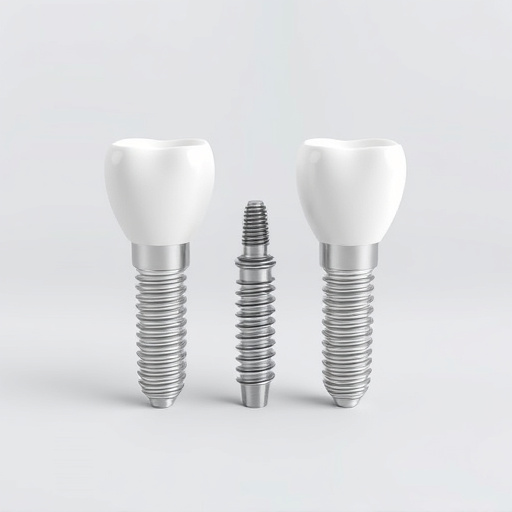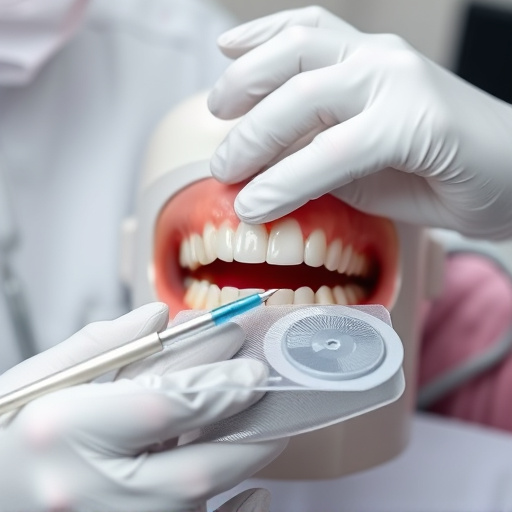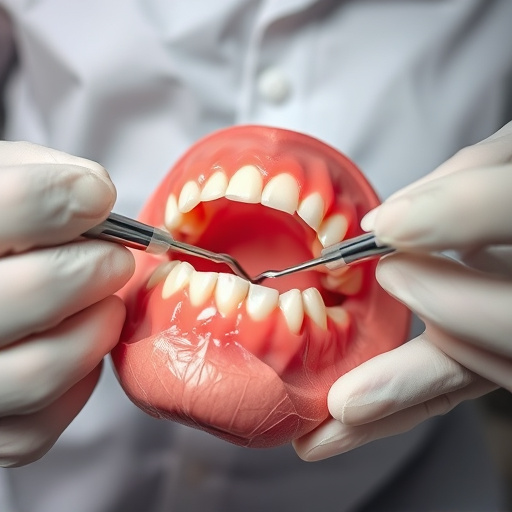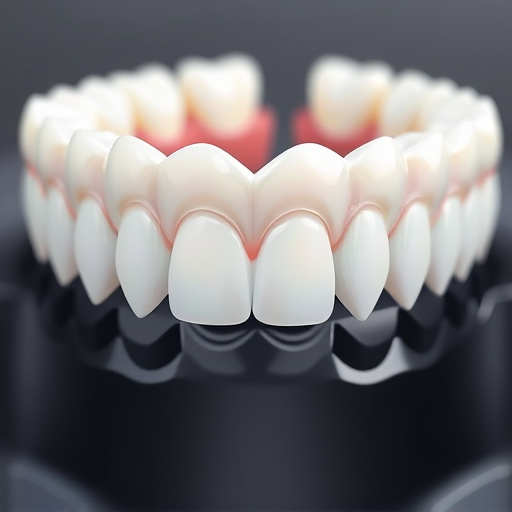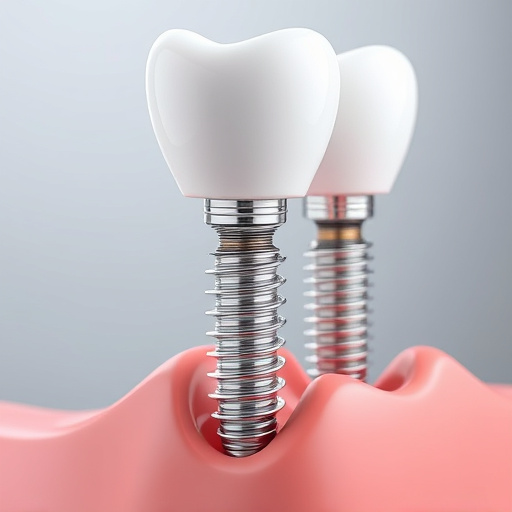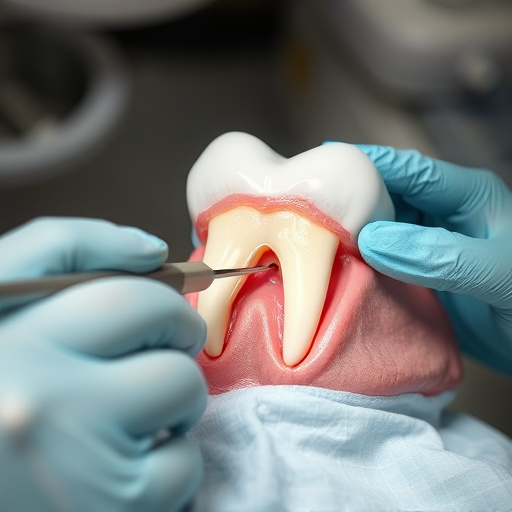3D dental imaging has revolutionized dentistry by offering detailed, three-dimensional views of patients' oral cavities, surpassing traditional 2D X-rays. This technology combines multiple images from various angles to create precise digital models, providing dentists with accurate information about teeth, gums, and surrounding structures. Beneficial for family dentistry practices, it aids in routine cleanings, restorative procedures, and complex surgeries, reducing surgical surprises and improving patient outcomes. 3D imaging guides precise placement of dental devices, facilitates communication through shared digital models, and enhances overall treatment success from cleanings to extensive procedures.
“Discover how 3D dental imaging is transforming oral surgery, offering unprecedented precision and clarity. This advanced technology provides detailed, three-dimensional views of teeth, gums, and jaw structures, enabling dentists to anticipate and avoid surgical surprises. By understanding the benefits of 3D imaging, from improved diagnosis to enhanced treatment planning, healthcare professionals can ensure safer, more effective procedures. Explore the future of dental care where scanning technologies lead to better outcomes.”
- Understanding 3D Dental Imaging Technology
- Benefits of 3D Imaging in Dental Surgery
- Navigating Surgical Surprises with Advanced Dental Scanning
Understanding 3D Dental Imaging Technology
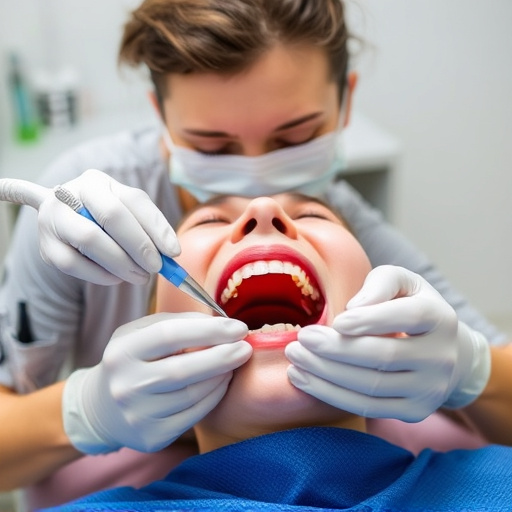
3D dental imaging technology has transformed the way dental professionals assess and treat patients. Unlike traditional 2D X-rays, which offer a flat view of the mouth, 3D imaging provides a comprehensive, three-dimensional representation of teeth, gums, and surrounding structures. This advanced technology utilizes specialized scanners to capture multiple images from different angles, which are then combined to create detailed digital models.
By offering a more accurate and nuanced view of the oral cavity, 3D dental imaging plays a pivotal role in various dental procedures, from planning routine dental cleanings and restorative dentistry to navigating complex surgeries. It enables dentists to identify subtle abnormalities, pinpoint problem areas, and make informed decisions, thereby reducing the risk of surgical surprises. This technology is particularly beneficial for family dentistry practices, where comprehensive oral health management requires precise understanding and communication between dentist and patient.
Benefits of 3D Imaging in Dental Surgery

The integration of 3D dental imaging has revolutionized the field of dentistry, offering numerous benefits that enhance both surgical precision and patient outcomes. This advanced technology provides a detailed, three-dimensional view of the oral cavity, allowing dentists to identify complex anatomical structures with ease. Unlike traditional 2D imaging, 3D imaging captures the depth and dimensions of teeth, gums, and nearby bones, enabling more accurate planning for various dental procedures.
One of its key advantages is improved visualization, which is particularly valuable in complex cases such as implant surgeries, root canal treatments, or cosmetic fillings. Dentists can identify potential risks, like narrow spaces or hidden abnormalities, before the procedure, thus minimizing surgical surprises and complications. Additionally, 3D imaging facilitates better communication between dentists and patients, as detailed digital models can be shared and discussed, promoting a collaborative approach to preventive dentistry and enhancing patient trust. This technology also plays a significant role in guiding precise placement of dental devices during surgeries, contributing to faster recovery times and the overall success of treatments, including those involving dental cleanings and more extensive procedures.
Navigating Surgical Surprises with Advanced Dental Scanning

Navigating Surgical Surprises with Advanced Dental Scanning
In the realm of dental care, technological advancements have played a pivotal role in enhancing precision and reducing unexpected outcomes during surgeries. One such game-changer is 3D dental imaging, which offers an unprecedented level of detail and clarity. This advanced scanning technique allows dentists to create precise, three-dimensional models of teeth, gums, and surrounding structures, providing a comprehensive view that was previously unattainable. With 3D dental imaging, practitioners can better plan treatments, especially for complex procedures like cosmetic fillings or intricate dental cleanings.
By leveraging these detailed scans, general dentistry practices can anticipate potential challenges and plan accordingly. This proactive approach ensures that surgeries are executed with minimal surprises, promoting more effective and efficient treatment outcomes. Whether it’s identifying hidden cavities during routine dental cleanings or navigating delicate anatomical structures for advanced procedures, 3D imaging empowers dentists to make informed decisions, ultimately benefiting patient care.
3D dental imaging technology has revolutionized the way dental surgeries are performed, offering a clearer view of what lies beneath the surface. By providing detailed, three-dimensional models of teeth and jaw structures, this advanced scanning method allows dentists to anticipate potential surprises during procedures, ensuring more precise and successful operations. With its ability to detect subtle anomalies, 3D imaging plays a pivotal role in minimizing surgical risks and enhancing overall patient outcomes.



